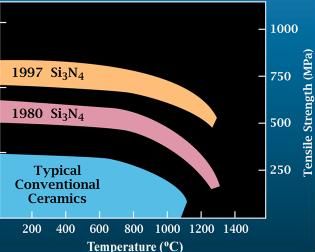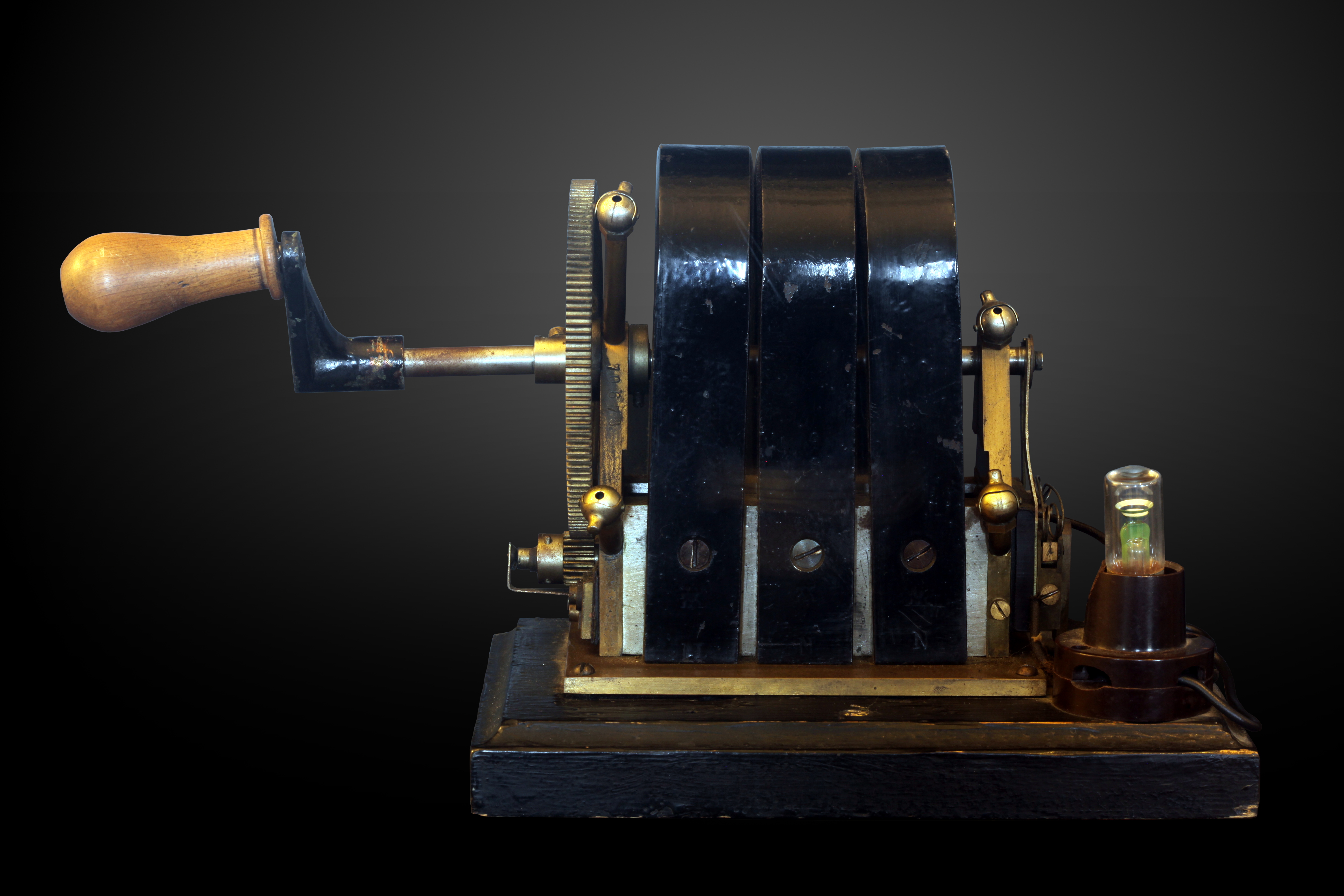|
Magnetic Force Microscope
Magnetic force microscopy (MFM) is a variety of atomic force microscopy, in which a sharp magnetized tip scans a magnetic sample; the tip-sample magnetic interactions are detected and used to reconstruct the magnetic structure of the sample surface. Many kinds of magnetic interactions are measured by MFM, including magnetic dipole–dipole interaction. MFM scanning often uses non-contact atomic force microscopy (NC-AFM) and is considered to be non-destructive with respect to the test sample. In MFM, the test sample(s) do not need to be electrically conductive to be imaged. Overview In MFM measurements, the magnetic force between the test sample and the tip can be expressed as :\vec F=\mu_o (\vec m \cdot \nabla ) \vec H \,\! where \vec m \, \! is the magnetic moment of the tip (approximated as a point dipole), \vec H \, \! is the magnetic stray field from the sample surface, and ''μ0'' is the magnetic permeability of free space. Because the stray magnetic field from the samp ... [...More Info...] [...Related Items...] OR: [Wikipedia] [Google] [Baidu] |
MFM AFM JANUSZ REBIS INFOCENTRE PL HDD MAGNETIC MEMORY EVOLUTION
MFM may refer to: Broadcasting * MFM 92.6, a South African radio station based at Stellenbosch University * MFM 97.1, former name of Heart Wirral, a local radio station in Birkenhead, UK * MFM 103.4, former name of Marcher Sound, a UK radio station * MFM Radio, a French radio station Computers * Modified frequency modulation, a data encoding method used on floppy disks and older hard disks Other * MFM, IATA airport code for Macau International Airport * Magnetic force microscope, an atomic force microscope for examining samples of magnetic materials * Marine fuel management, techniques for efficient use of fuel by ships * Material flow management, a method of efficiently managing materials * Maternal–fetal medicine, the subspeciality of obstetrics that deals with high risk pregnancies. * ''Measure for Measure'', a play by Shakespeare. * ''Melodies from Mars'', an unreleased album by Richard David James under his pseudonym Afx * Methylsulfonylmethane, an organosulfur chemical ... [...More Info...] [...Related Items...] OR: [Wikipedia] [Google] [Baidu] |
Nickel
Nickel is a chemical element; it has symbol Ni and atomic number 28. It is a silvery-white lustrous metal with a slight golden tinge. Nickel is a hard and ductile transition metal. Pure nickel is chemically reactive, but large pieces are slow to react with air under standard conditions because a passivation layer of nickel oxide forms on the surface that prevents further corrosion. Even so, pure native nickel is found in Earth's crust only in tiny amounts, usually in ultramafic rocks, and in the interiors of larger nickel–iron meteorites that were not exposed to oxygen when outside Earth's atmosphere. Meteoric nickel is found in combination with iron, a reflection of the origin of those elements as major end products of supernova nucleosynthesis. An iron–nickel mixture is thought to compose Earth's outer and inner cores. Use of nickel (as natural meteoric nickel–iron alloy) has been traced as far back as 3500 BCE. Nickel was first isolated and classifie ... [...More Info...] [...Related Items...] OR: [Wikipedia] [Google] [Baidu] |
Microtesla
The tesla (symbol: T) is the unit of magnetic flux density (also called magnetic B-field strength) in the International System of Units (SI). One tesla is equal to one weber per square metre. The unit was announced during the General Conference on Weights and Measures in 1960 and is named in honour of Serbian-American electrical and mechanical engineer Nikola Tesla, upon the proposal of the Slovenian electrical engineer France Avčin. Definition A particle, carrying a charge of one coulomb (C), and moving perpendicularly through a magnetic field of one tesla, at a speed of one metre per second (m/s), experiences a force with magnitude one newton (N), according to the Lorentz force law. That is, \mathrm. As an SI derived unit, the tesla can also be expressed in terms of other units. For example, a magnetic flux of 1 weber (Wb) through a surface of one square meter is equal to a magnetic flux density of 1 tesla.''The International System of Units (SI), 8th edition'', ... [...More Info...] [...Related Items...] OR: [Wikipedia] [Google] [Baidu] |
Gauss (unit)
The gauss (symbol: , sometimes Gs) is a unit of measurement of magnetic induction, also known as magnetic flux density. The unit is part of the Gaussian units, Gaussian system of units, which inherited it from the older centimetre–gram–second system of units#Electromagnetic units .28EMU.29, centimetre–gram–second electromagnetic units (CGS-EMU) system. It was named after the German mathematician and physicist Carl Friedrich Gauss in 1936. One gauss is defined as one maxwell (unit), maxwell per square centimetre. As the centimetre–gram–second system of units (cgs system) has been superseded by the International System of Units (SI), the use of the gauss has been deprecated by the standards bodies, but is still regularly used in various subfields of science. The SI unit for magnetic flux density is the Tesla (unit), tesla (symbol T), which corresponds to . Name, symbol, and metric prefixes Although not a component of the International System of Units, the usage of the g ... [...More Info...] [...Related Items...] OR: [Wikipedia] [Google] [Baidu] |
Magnetic Field
A magnetic field (sometimes called B-field) is a physical field that describes the magnetic influence on moving electric charges, electric currents, and magnetic materials. A moving charge in a magnetic field experiences a force perpendicular to its own velocity and to the magnetic field. A permanent magnet's magnetic field pulls on ferromagnetic materials such as iron, and attracts or repels other magnets. In addition, a nonuniform magnetic field exerts minuscule forces on "nonmagnetic" materials by three other magnetic effects: paramagnetism, diamagnetism, and antiferromagnetism, although these forces are usually so small they can only be detected by laboratory equipment. Magnetic fields surround magnetized materials, electric currents, and electric fields varying in time. Since both strength and direction of a magnetic field may vary with location, it is described mathematically by a function (mathematics), function assigning a Euclidean vector, vector to each point of space, ... [...More Info...] [...Related Items...] OR: [Wikipedia] [Google] [Baidu] |
Piconewton
The newton (symbol: N) is the unit of force in the International System of Units (SI). Expressed in terms of SI base units, it is 1 kg⋅m/s2, the force that accelerates a mass of one kilogram at one metre per second squared. The unit is named after Isaac Newton in recognition of his work on classical mechanics, specifically his second law of motion. Definition A newton is defined as 1 kg⋅m/s2 (it is a named derived unit defined in terms of the SI base units). One newton is, therefore, the force needed to accelerate one kilogram of mass at the rate of one metre per second squared in the direction of the applied force. The units "metre per second squared" can be understood as measuring a rate of change in velocity per unit of time, i.e. an increase in velocity by one metre per second every second. In 1946, the General Conference on Weights and Measures (CGPM) Resolution 2 standardized the unit of force in the MKS system of units to be the amount needed to ... [...More Info...] [...Related Items...] OR: [Wikipedia] [Google] [Baidu] |
Coercivity
Coercivity, also called the magnetic coercivity, coercive field or coercive force, is a measure of the ability of a ferromagnetic material to withstand an external magnetic field without becoming Magnetization, demagnetized. Coercivity is usually measured in oersted or ampere/meter units and is denoted . An analogous property in electrical engineering and materials science, electric coercivity, is the ability of a ferroelectric material to withstand an external electric field without becoming polarization density, depolarized. Ferromagnetic materials with high coercivity are called magnetically ''hard'', and are used to make permanent magnets. Materials with low coercivity are said to be magnetically ''soft''. The latter are used in transformer and inductor magnetic core, cores, recording heads, microwave devices, and magnetic shielding. Definitions Coercivity in a ferromagnet, ferromagnetic material is the intensity of the applied magnetic field (''H'' field) required ... [...More Info...] [...Related Items...] OR: [Wikipedia] [Google] [Baidu] |
Silicon Nitride
Silicon nitride is a chemical compound of the elements silicon and nitrogen. (''Trisilicon tetranitride'') is the most thermodynamically stable and commercially important of the silicon nitrides, and the term ″''Silicon nitride''″ commonly refers to this specific composition. It is a white, high-melting-point solid that is relatively chemically inert, being attacked by dilute HF and hot . It is very hard (8.5 on the mohs scale). It has a high thermal stability with strong optical nonlinearities for all-optical applications. Production Silicon nitride is prepared by heating powdered silicon between 1300 °C and 1400 °C in a nitrogen atmosphere: :3 Si + 2 → The silicon sample weight increases progressively due to the chemical combination of silicon and nitrogen. Without an iron catalyst, the reaction is complete after several hours (~7), when no further weight increase due to nitrogen absorption (per gram of silicon) is detected. In addition to , several other ... [...More Info...] [...Related Items...] OR: [Wikipedia] [Google] [Baidu] |
Silicon Dioxide
Silicon dioxide, also known as silica, is an oxide of silicon with the chemical formula , commonly found in nature as quartz. In many parts of the world, silica is the major constituent of sand. Silica is one of the most complex and abundant families of materials, existing as a compound of several minerals and as a synthetic product. Examples include fused quartz, fumed silica, opal, and aerogels. It is used in structural materials, microelectronics, and as components in the food and pharmaceutical industries. All forms are white or colorless, although impure samples can be colored. Silicon dioxide is a common fundamental constituent of glass. Structure In the majority of silicon dioxides, the silicon atom shows tetrahedral coordination, with four oxygen atoms surrounding a central Si atomsee 3-D Unit Cell. Thus, SiO2 forms 3-dimensional network solids in which each silicon atom is covalently bonded in a tetrahedral manner to 4 oxygen atoms. In contrast, CO2 is a li ... [...More Info...] [...Related Items...] OR: [Wikipedia] [Google] [Baidu] |
Silicon Crystal
Monocrystalline silicon, often referred to as single-crystal silicon or simply mono-Si, is a critical material widely used in modern electronics and photovoltaics. As the foundation for silicon-based discrete components and integrated circuits, it plays a vital role in virtually all modern electronic equipment, from computers to smartphones. Additionally, mono-Si serves as a highly efficient light-absorbing material for the production of solar cells, making it indispensable in the renewable energy sector. It consists of silicon in which the crystal lattice of the entire solid is continuous, unbroken to its edges, and free of any grain boundaries (i.e. a single crystal). Mono-Si can be prepared as an intrinsic semiconductor that consists only of exceedingly pure silicon, or it can be doped by the addition of other elements such as boron or phosphorus to make p-type or n-type silicon. Due to its semiconducting properties, single-crystal silicon is perhaps the most important tech ... [...More Info...] [...Related Items...] OR: [Wikipedia] [Google] [Baidu] |
AFM Probe
Atomic force microscopy (AFM) or scanning force microscopy (SFM) is a very-high-resolution type of scanning probe microscopy (SPM), with demonstrated resolution on the order of fractions of a nanometer, more than 1000 times better than the optical diffraction limit. Overview Atomic force microscopy (AFM) gathers information by "feeling" or "touching" the surface with a mechanical probe. Piezoelectric elements that facilitate tiny but accurate and precise movements on (electronic) command enable precise scanning. Despite the name, the Atomic Force Microscope does not use the nuclear force. Abilities and spatial resolution The AFM has three major abilities: force measurement, topographic imaging, and manipulation. In force measurement, AFMs can be used to measure the forces between the probe and the sample as a function of their mutual separation. This can be applied to perform force spectroscopy, to measure the mechanical properties of the sample, such as the sample's Young' ... [...More Info...] [...Related Items...] OR: [Wikipedia] [Google] [Baidu] |
Magneto Optics Versus MFM
A magneto is an electrical generator that uses magnet, permanent magnets to produce periodic pulses of alternating current. Unlike a dynamo, a magneto does not contain a Commutator (electric), commutator to produce direct current. It is categorized as a form of alternator, although it is usually considered distinct from most other alternators, which use field coils rather than permanent magnets. Hand-cranked magneto generators were used to provide ringing current in telephone systems. Magnetos were also adapted to produce pulses of high voltage in the ignition systems of some gasoline-powered internal combustion engines to provide power to the spark plugs. Use of such ignition magnetos for ignition is now limited mainly to engines without a low-voltage electrical system, such as lawnmowers and chainsaws, and to aircraft engines, in which keeping the ignition independent of the rest of the electrical system ensures that the engine continues running in the event of alternator (au ... [...More Info...] [...Related Items...] OR: [Wikipedia] [Google] [Baidu] |






